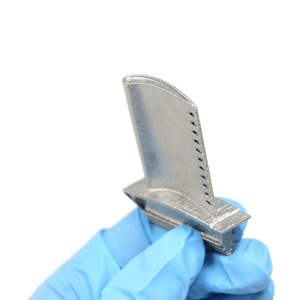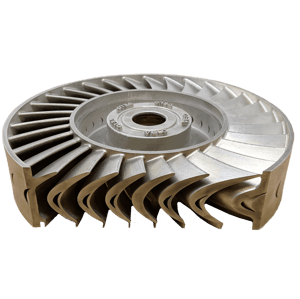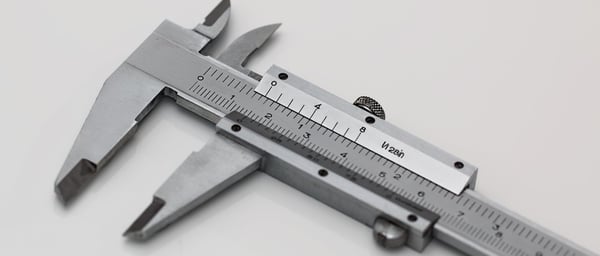 Alison is part of the Advanced Space Launch System leadership group that provides guidance and integration support to space and deep-space rocket engine programs (boosters, second stage, in-space thrusters, and Mars and Lunar landers)—for additive manufacturing (AM) and advanced material technologies. She provides technical leadership in AM process selection, design, alloy development, and Technology Readiness Level (TRL) and Manufacturing Readiness Level (MRL) maturation. The majority of her time is spent working with engineering teams to plan and coordinate taking additive design concepts to engine hot-fire certification and eventual insertion into series-production programs.
Alison is part of the Advanced Space Launch System leadership group that provides guidance and integration support to space and deep-space rocket engine programs (boosters, second stage, in-space thrusters, and Mars and Lunar landers)—for additive manufacturing (AM) and advanced material technologies. She provides technical leadership in AM process selection, design, alloy development, and Technology Readiness Level (TRL) and Manufacturing Readiness Level (MRL) maturation. The majority of her time is spent working with engineering teams to plan and coordinate taking additive design concepts to engine hot-fire certification and eventual insertion into series-production programs.
- Alison, please tell us about yourself
I’m a program manager in Advanced Programs at Aerojet Rocketdyne. We’re the U.S. leader in power and propulsion systems supporting space, missile and strategic-defense sectors. My group works on the next generation of space-propulsion products. We also identify, develop and deploy cool, advanced technologies to build those next-generation products. The types of rocket propulsion products I work on vary from very large to very small: first- and second-stage rocket propulsion for human spaceflight, commercial- and national-security launch vehicles, and in-space propulsion and power systems for the nation’s next deep-space rocket. I’m also a mom of two teen girls and two girl puppies.

- How did you get involved with metal additive manufacturing (AM)?
About nine years ago, I was working on a power-metallurgy process, and the team lead told me about a visit he just made to a service bureau. He showed me what a metal AM part looks like (I believe it was just a trinket, a castle), and that’s all it took to convince me this is what I wanted to work on. So I asked him if I could be on the AM team that was just being created. First I worked on alloy development, processing maturation, and property testing of AM materials. As the team got bigger, I moved on to become a technology integrator—pushing and pulling AM technologies to programs, aligning and executing AM projects, and integrating inter- and intra-program efforts related to AM.
"You can’t just mature a design but not the material—you need to do both. You can’t ignore the fact that the coolest and complex shape you just designed may be the biggest nightmare for NDE (Non-Destructive Evaluation) folks"

- What are you most impressed with when it comes to AM?
From an organizational point of view, AM makes you work and think in an inter-disciplinary setting. You’re not just making parts or material—you’re making both. You can’t just mature a design but not the material—you need to do both. You can’t ignore the fact that the coolest and complex shape you just designed may be the biggest nightmare for NDE (Non-Destructive Evaluation) folks. An experienced AM leader will need to have expert knowledge in all areas of engineering, quality, procurement, and project management to be the orchestra (or sometimes circus) conductor. From a technical standpoint, what makes me most impressed about AM is that we can finally do “one-stop manufacturing.” From designing, to printing, to final inspection, to joining to other parts of an engine, we may be able to do that in one build. I see some people only concerned about cost and time of printing. AM cannot exist in vacuum. You always need to see the big picture.
"... we can finally do “one-stop manufacturing.” From designing, to printing, to final inspection, to joining to other parts of an engine, we may be able to do that in one build."

- What are the biggest challenges the AM industry faces and what’s your perspective on how to address them?
We were one of the early adopters of AM who invested a lot in capital equipment, materials and process development, and the design cycle of various applications. As you can imagine, we had our shares of ups and downs during the last nine years. From my vantage point (on an enterprise-wide AM team), I see this tug-of-war between tech development and product insertion in full view. I think for a company like us where AM can really take off, it’s important to continuously assess this continuum of tech development and product insertion. For AM technology, I find it to be crucial to communicate between technology and product teams about what it means to be “sufficient” and “ready.” Both sides need to recognize the need for flexibility to back off or forge ahead at key junctures. One product team is comfortable with the risks associated with an SLM surface, but for another product team it is a show-stopper. As an end user of AM, knowing when to declare AM technology ready for your particular product to be successful—and agreeing with all the stakeholders as to what level of knowledge is needed to make such a conclusion—will be a challenge.
"I think for a company like us where AM can really take off, it’s important to continuously assess this continuum of tech development and product insertion."

- What do you predict to be the top AM trends for this year and beyond?
I predict AM-machine companies, especially those making powder-bed metal printers, will provide machine solutions that are more customized for end users: A one-meter square build platform, a machine with XX-power laser, ongoing quality-assurance data output, and whatever specific next-gen capability matches their customer’s or market’s desire. I think there will be more emphasis on cyber security. I also think there is an ample opportunity for specialized AM materials to be developed—again, to match a specific customer’s needs.
--
Come listen to Alison talk more about her experience in metal AM by attending her session at AMUG on March 24th, 2020 at 11am titled "Dream Vs. Reality for AM Production"




